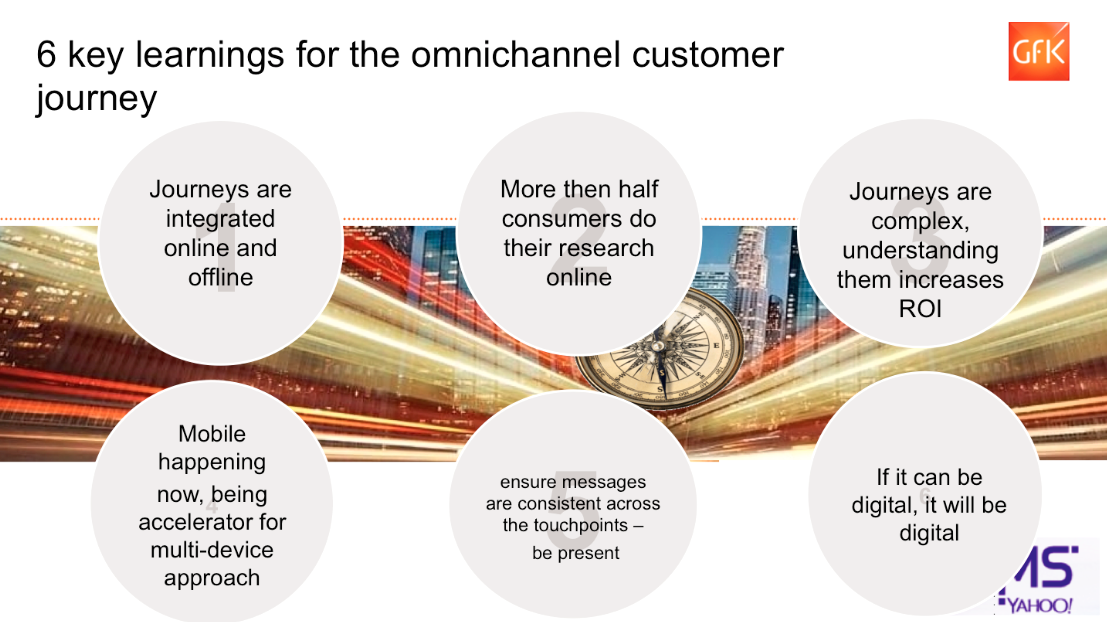Mapping the multi-device omnichannel purchase journey 6 lessons learned capturing hybrid customer behavior
Laurens reviewed a recent study that over 3% of people wishing to stay connected and amused even in the bathroom. Mobile is the key driver for business growth as a result of tremendous mobile sales increase at 269% from 2011 to 2013. Global mobile transactions were predicted to reach US$617bn in 2016 and global mobile ad revenue would reach $24.5bn in 2016. Laurens suggested marketers paid attention to the following trends:
- Changing from product to customer centric
- Instant gratification is not an option
- Time is most valuable asset and youth generation thinks that innovation means a faster way of doing things
- Impatient and distracted customers with the following characteristics:
Laurens continued explaining omnichannel tablet-purchase behaviour from a recent study in Singapore. 87% of people used both online and offline in the purchase journey, with 31 minutes spent on online search. Laurens then showed a video about Motor Insurance Purchase Journey in Europe last year. This study indicated that 82% of people searched online for a product, 49% of people agreed to pay more for a stronger brand, and offline touch points could drive 40% more on online search.
How about flight ticket purchase in Hong Kong? Laurens was amazed by the long time spent on research online and complexity on the purchase journey. According to the research, many people didn’t know where to go 3 months before the trip, considered 10 times more brands but forgot 2/3 of brands after they booked the tickets. Over 65% people used all 3 devices (PC, tablet and mobile) to gather information and they took over 5 hours to search for the best deal. Search Engine was as important as Word of Mouth at 91% for evaluation and Branded Search dominated at the start in HK.
Laurens concluded his presentation with six key takeaways as follows:
